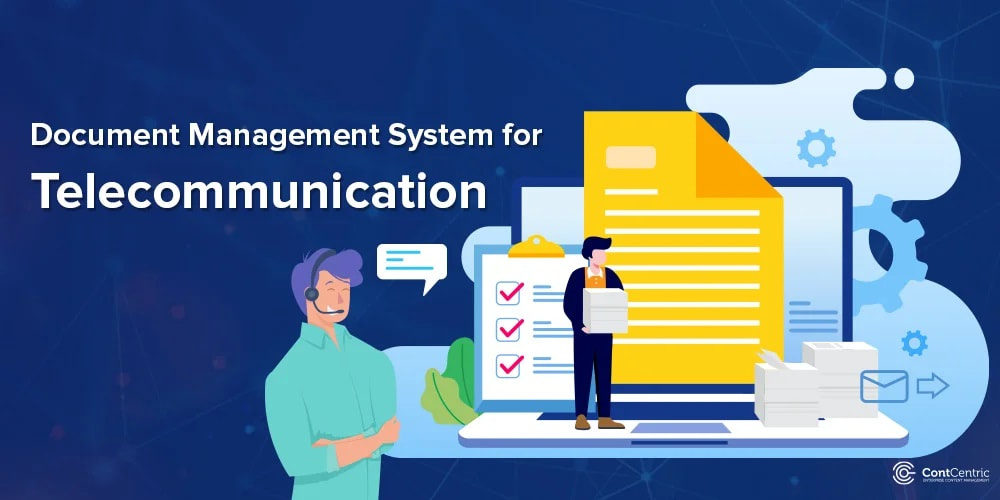Telecommunication Industry Document Scanning Service
Telecom Files Paper Document Digitise Service
The telecom industry handles a vast amount of documents related to contracts, invoices, purchase orders, service agreements, and other critical business operations.
Document scanning is the process of converting paper documents into digital format, and it can bring significant benefits to the telecom industry, including:
1. Improved efficiency: Scanned documents can be easily accessed and shared digitally, reducing the time spent on physical document handling and transportation.
2. Enhanced security: Digital documents can be encrypted and protected with access controls, reducing the risk of physical document loss or theft.
3. Cost savings: Document scanning can reduce printing, storage, and transportation costs associated with physical documents.
4. Compliance: Scanned documents can be easily searched and tracked, ensuring compliance with industry regulations and internal policies.
To implement document scanning in the telecom industry, companies can either perform the Scanext scanning in-house or Scanext on site scanning. Scanext also provide document management software to organize, index, and search the scanned documents efficiently. Additionally, companies should establish clear document retention policies to ensure that scanned documents are properly stored and disposed of when no longer needed.
Document scanning is the process of converting paper documents into digital format, and it can bring significant benefits to the telecom industry, including:
1. Improved efficiency: Scanned documents can be easily accessed and shared digitally, reducing the time spent on physical document handling and transportation.
2. Enhanced security: Digital documents can be encrypted and protected with access controls, reducing the risk of physical document loss or theft.
3. Cost savings: Document scanning can reduce printing, storage, and transportation costs associated with physical documents.
4. Compliance: Scanned documents can be easily searched and tracked, ensuring compliance with industry regulations and internal policies.
To implement document scanning in the telecom industry, companies can either perform the Scanext scanning in-house or Scanext on site scanning. Scanext also provide document management software to organize, index, and search the scanned documents efficiently. Additionally, companies should establish clear document retention policies to ensure that scanned documents are properly stored and disposed of when no longer needed.
Document scanning is important for the telecom industry for several reasons:
1. Improved Efficiency: Telecom companies handle a vast amount of documents related to contracts, invoices, purchase orders, service agreements, and other critical business operations. Scanning these documents and converting them into digital format can help to reduce the time and resources required for physical document handling, transportation, and storage. Digitized documents can be easily accessed, shared, and searched, which can improve overall business efficiency.
2. Enhanced Security: Telecom companies deal with sensitive customer information and confidential business data. Scanning and digitizing documents can help to enhance the security of these documents by reducing the risk of physical document loss, damage, or theft. Digital documents can also be protected with access controls and encryption to ensure that only authorized personnel can access them.
3. Cost Savings: Physical document storage, printing, and transportation can be costly for telecom companies. Document scanning can help to reduce these costs by reducing the need for physical storage space, minimizing printing costs, and reducing transportation costs associated with physical documents.
4. Compliance: Telecom companies must comply with industry regulations and internal policies related to document management and retention. Scanned documents can be easily tracked, searched, and audited, which can help to ensure compliance with these regulations and policies.
Overall, document scanning is essential for the telecom industry to streamline operations, reduce costs, enhance security, and ensure compliance with regulations and policies.
1. Improved Efficiency: Telecom companies handle a vast amount of documents related to contracts, invoices, purchase orders, service agreements, and other critical business operations. Scanning these documents and converting them into digital format can help to reduce the time and resources required for physical document handling, transportation, and storage. Digitized documents can be easily accessed, shared, and searched, which can improve overall business efficiency.
2. Enhanced Security: Telecom companies deal with sensitive customer information and confidential business data. Scanning and digitizing documents can help to enhance the security of these documents by reducing the risk of physical document loss, damage, or theft. Digital documents can also be protected with access controls and encryption to ensure that only authorized personnel can access them.
3. Cost Savings: Physical document storage, printing, and transportation can be costly for telecom companies. Document scanning can help to reduce these costs by reducing the need for physical storage space, minimizing printing costs, and reducing transportation costs associated with physical documents.
4. Compliance: Telecom companies must comply with industry regulations and internal policies related to document management and retention. Scanned documents can be easily tracked, searched, and audited, which can help to ensure compliance with these regulations and policies.
Overall, document scanning is essential for the telecom industry to streamline operations, reduce costs, enhance security, and ensure compliance with regulations and policies.
There are several steps that the telecom industry can follow to perform document scanning:
1. Identify the Documents: The first step is to identify the documents that need to be scanned. This may include contracts, invoices, purchase orders, service agreements, and other critical business documents.
2. Choose the Scanning Method: There are different scanning methods available, including flatbed scanners, sheet-fed scanners, and document scanners. Telecom companies can choose the scanning method that best suits their needs based on the volume and type of documents they need to scan.
3. Prepare the Documents: Before scanning, it is important to prepare the documents by removing staples, paperclips, and other binding materials. Documents should also be straightened and aligned to ensure accurate scanning.
4. Scan the Documents: Once the documents are prepared, they can be scanned using the chosen scanning method. During scanning, it is important to ensure that the scanned images are of high quality and resolution.
5. Save and Organize the Scanned Documents: After scanning, the documents can be saved in a digital format such as PDF, JPEG, or TIFF. Telecom companies can then organize the scanned documents using document management software, which can help to index, search, and retrieve the documents easily.
6. Dispose of the Physical Documents: Once the documents are scanned and saved in digital format, telecom companies can dispose of the physical documents according to their document retention policies.
Telecom companies can perform document scanning in-house or outsource to a professional document scanning service. In either case, it is important to ensure that the scanning process is carried out accurately and efficiently to ensure the best results.
Are ready to go paperless in your Telecom practice?
We are a Malaysia-based firm that has helped hundreds of businesses in Malaysia convert their paper documents to digital.
To start your digital transformation, fill out the form in Request Quotation Button or Whatsapp Us. One of our document management professionals will be in touch to learn about your practice.
1. Identify the Documents: The first step is to identify the documents that need to be scanned. This may include contracts, invoices, purchase orders, service agreements, and other critical business documents.
2. Choose the Scanning Method: There are different scanning methods available, including flatbed scanners, sheet-fed scanners, and document scanners. Telecom companies can choose the scanning method that best suits their needs based on the volume and type of documents they need to scan.
3. Prepare the Documents: Before scanning, it is important to prepare the documents by removing staples, paperclips, and other binding materials. Documents should also be straightened and aligned to ensure accurate scanning.
4. Scan the Documents: Once the documents are prepared, they can be scanned using the chosen scanning method. During scanning, it is important to ensure that the scanned images are of high quality and resolution.
5. Save and Organize the Scanned Documents: After scanning, the documents can be saved in a digital format such as PDF, JPEG, or TIFF. Telecom companies can then organize the scanned documents using document management software, which can help to index, search, and retrieve the documents easily.
6. Dispose of the Physical Documents: Once the documents are scanned and saved in digital format, telecom companies can dispose of the physical documents according to their document retention policies.
Telecom companies can perform document scanning in-house or outsource to a professional document scanning service. In either case, it is important to ensure that the scanning process is carried out accurately and efficiently to ensure the best results.
Are ready to go paperless in your Telecom practice?
We are a Malaysia-based firm that has helped hundreds of businesses in Malaysia convert their paper documents to digital.
To start your digital transformation, fill out the form in Request Quotation Button or Whatsapp Us. One of our document management professionals will be in touch to learn about your practice.
Related Products:















